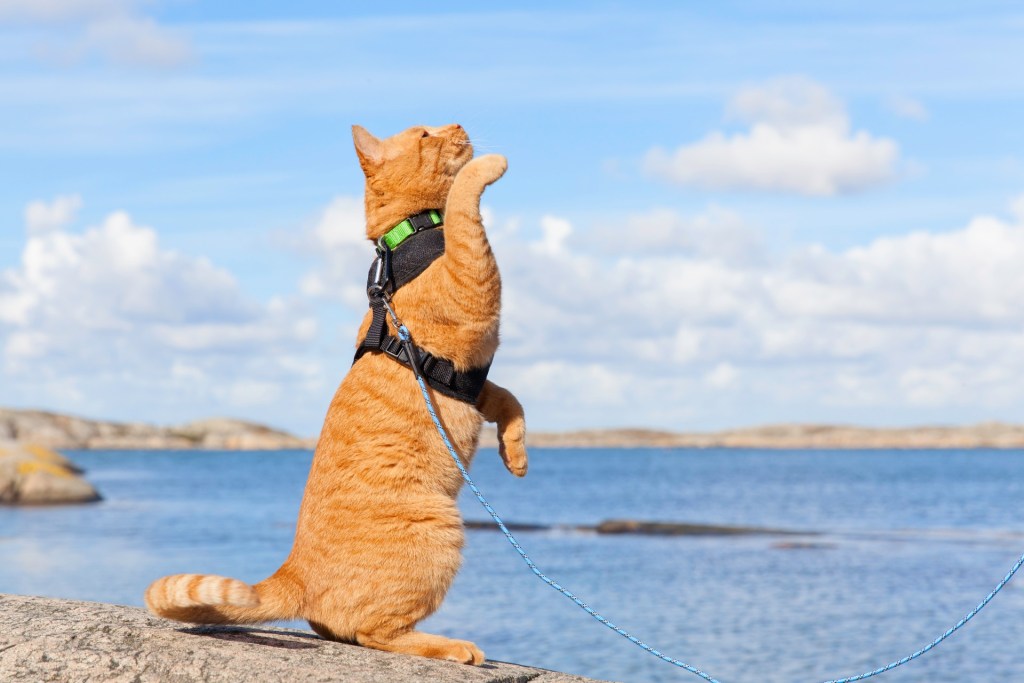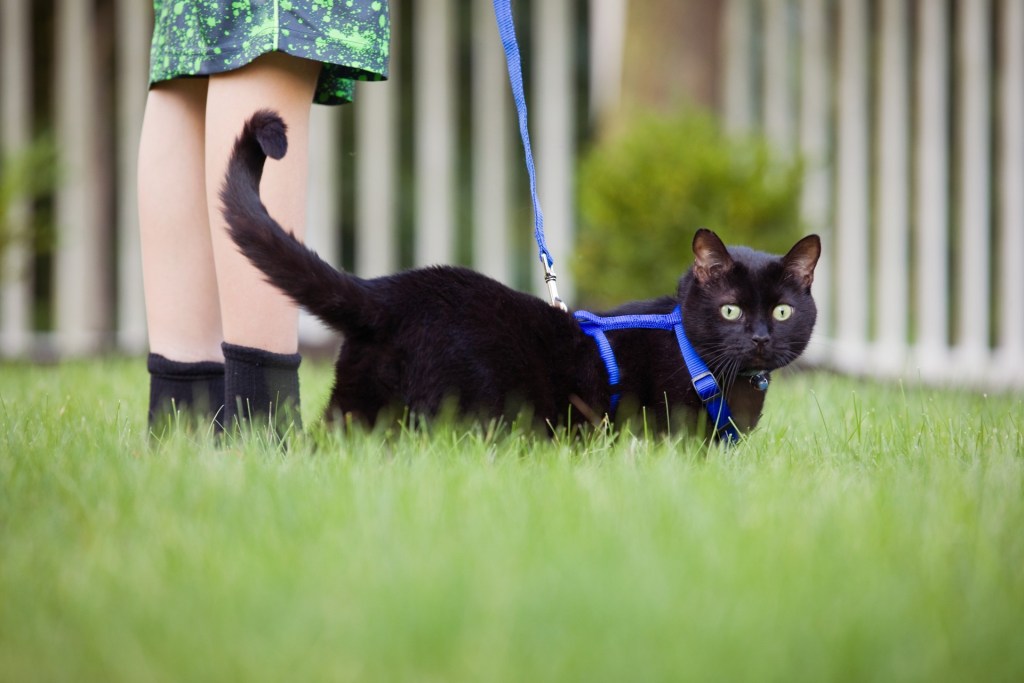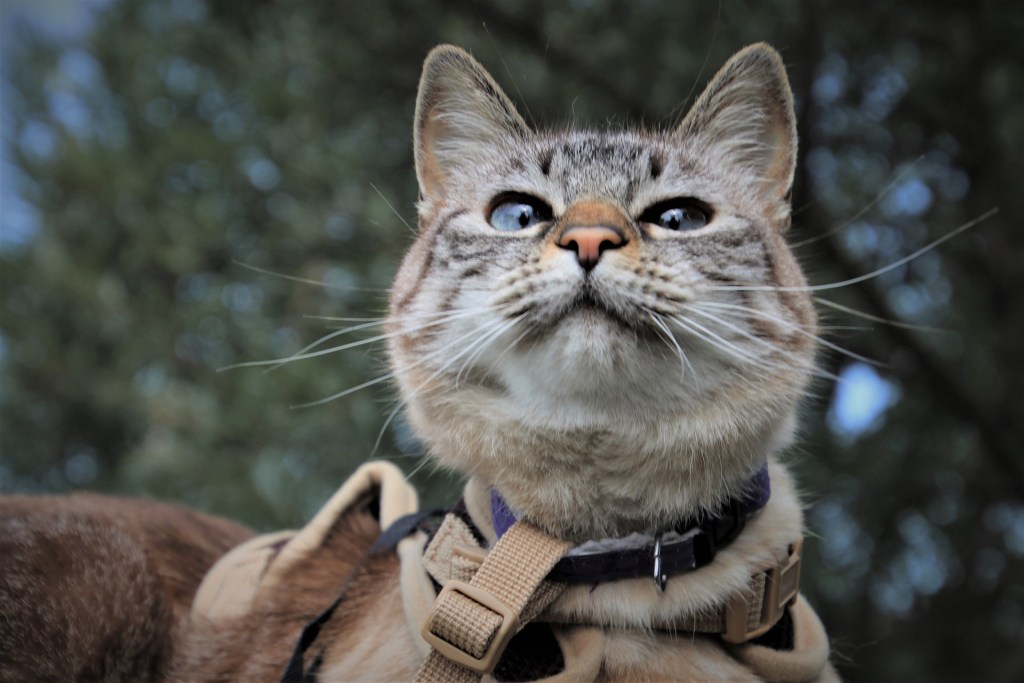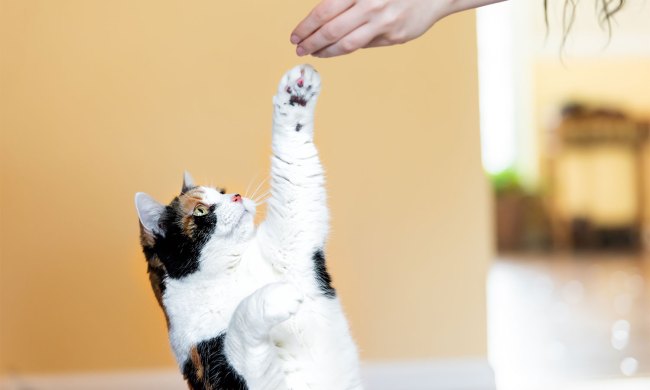You don't feel comfortable with an indoor-outdoor cat, but you want your cat to experience the enrichment and curiosity that comes from going outside. A good harness can help you balance your cat's well-being with the safety of the birds outside.
Cats are more wily than dogs. You must take extra care to fit your cat's harness so they can't escape, or you'll be sending out search parties for your cat on your first walk.

How to measure your cat
The fit is the most important goal here. The harness must be tight enough to secure your cat but not so tight that it’s uncomfortable or causes the dreaded cat flop the moment you put it on.
You should be able to put two fingers underneath the harness without much trouble. If it takes a lot of work, the harness is too tight. If you can fit three or four fingers side by side with plenty of space, your cat is escaping that harness the moment you go outside. Harnesses have multiple adjustment points to get the fit just right, but it all starts with the right size.
Here’s how to measure your cat correctly.
Step 1: Use a cloth tape measure
This will provide the best results.
Step 2: Measure the girth
Wrap the tape measure around your cat’s chest just behind its front legs to get the girth measurement. Make sure the tape is flat and fairly tight.
Step 3: Measure the neck
Repeat the same measurement technique with your cat’s neck.
Step 4: Find the correct sized harness
Based on those measurements you should be able to find a harness that fits like a glove. If your cat is between sizes, it’s best to size up so you can use the adjustment points for a customized fit.

Get the right style
Cats are notoriously picky, so you may have to experiment to get the right harness. Much like their food or litter box location, your cat’s preferences may determine the style of harness you purchase, and that’s that.
There are three basic styles of cat harness:
H-style harness -- Gets its name because it looks like the letter "H" when spread out. One piece fits behind your cat's front legs and around the chest while the other fits in front of them. They're open and allow movement but can be easy to escape for some cats.
Step-in harness -- Allows your cat to step into it and then you slip the front piece over your cat's head. These harnesses are great for senior cats that need help getting into them but are also the easiest to escape from.
Vet harness -- Features a padded panel on the chest and sometimes the back, which helps secure the harness and makes it difficult to escape. The drawback is it also covers more of your cat, and some felines may protest wearing one.

Helping your cat accept the harness
Vest-style harnesses are the best for escape artists, but they may take some getting used to. The best thing to do is start your kitten wearing one so they’re used to it by the time they reach adulthood. If you adopted an adult cat, consistency and patience are key. Follow these steps to help your cat slowly adjust to wearing a harness.
Step 1: Let your cat get used to the harness while it's off
Allow your cat to explore and sniff the harness without pressure to put it on.
Step 2: Offer special treats
Praise your cat and offer treats that are only available when harness training.
Step 3: Put the harness on your cat while in the house
Put the harness on your cat after a few days of allowing your cat to explore it. Give your cat time to wear the harness in your house and continue to offer those premium treats.
Step 4: Take your cat outside with the harness on
When your cat seems more comfortable, go for a short time on the leash in your backyard or patio — wherever you have space. Keep a close eye on your cat for signs of escaping.
Step 5: Repetition is key
Repeat until you’re confident your cat cannot escape, and then your cat is ready to explore outside (and keep those premium treats around just in case).

A matter of the right fit
A cat-walking harness can be a secure option for giving your pet valuable outdoor time, but the key is the right fit. You should be able to fit two fingers between the harness and your cat, but if your cat always seems to escape, that’s a different story.
Escape artists may need harnesses that fit more tightly. A vest-style harness removes any space your cat may have to maneuver out, so tighten the harness carefully while indoors to find the right balance.
If you notice your cat chafing or having trouble walking, loosen the adjustments just a bit. Experiment with tightness to balance safety and comfort.
Your cat will thrive with quality time outdoors to explore. Have patience while choosing and fitting a harness, as well as leash training, so that your cat can go from a bored house cat to an excited explorer.



